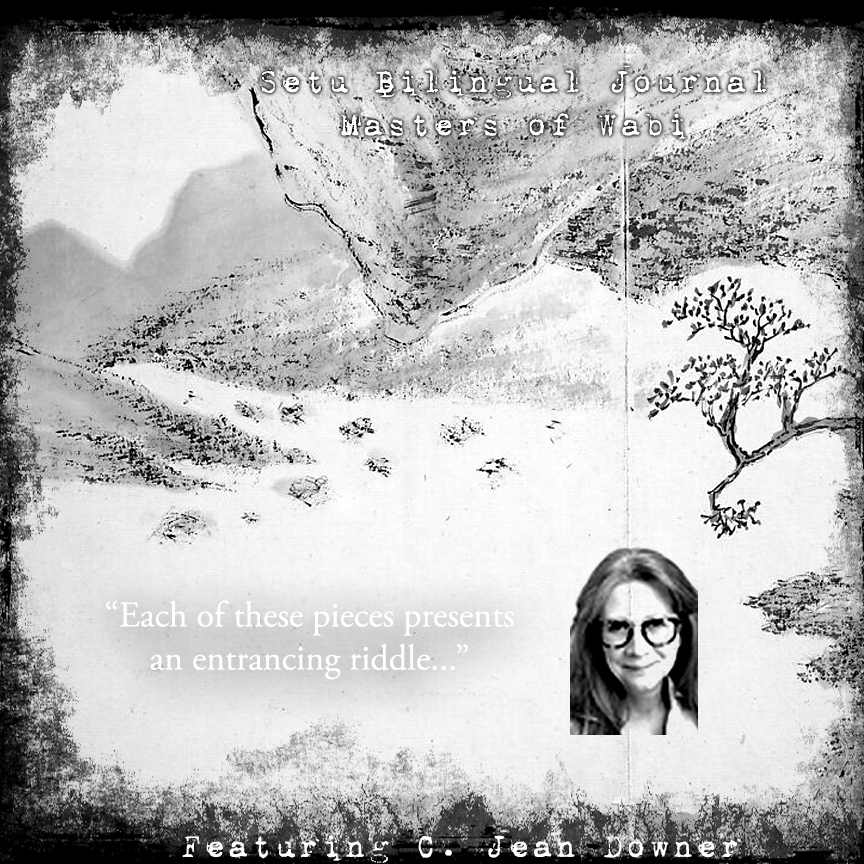
Truly honoured guest editor Jerome Berglund included me in Setu Special Edition: Masters Series Part II: Wabi, Urban Decay: Masters of Wabi: Featured Poets. Read Berglund’s superlative series here.
Here are two of my pieces and Berglund’s generous commentary:
leaf skeleton
frozen in the dog bowl
no longer needed
cold moon
she closes a date
on the quilt
Commentary
Bashō once advised that “haikai…needs more homely images”, and warned poets to preference “vegetable soup rather than duck stew”. Isolation and longing are two words also often associated with the praxis of wabi, which according to Mahayana Buddhism are in reality ameliorative traits for an initiate, connoting emancipation from the material realm and an elevating into purer ways of being.
[1] These two superlative poems by C. Jean Downer satisfy the godfather’s provisos and embody our germane aesthetic in telling ways which deserve careful scrutinizing. Applying an expression for the first full moon of winter, appropriated from early aboriginal peoples of the Mohawk tribe, from the get-go we find a kigo steeped in history and misfortune, primeval and woebegone. The stuck leaf, stripped bare in a dish, by its rough and abnormal character, makes a very wabi phrase indeed, and the rustic, frugal expertise of sewing is acutely relevant toward the folksy side of the sentiment.
In case you were not aware, alongside her stunning haiku and senryu this poet is also an author to thrilling mystery novels, including the recently debuted “Lies are Forever”. Her short form works are no less enigmatic, obeying the progenitor’s eminent sage insight, which Kenneth Yasuda translates as: “The haiku that reveals seventy to eighty percent of its subject is good. Those that reveal fifty to sixty percent we never tire of.” Each of these pieces presents an entrancing riddle in its icy mystery and wabi undertones… We must ask ourselves, who or what is no longer needed in the first poem? The leaf? The dog bowl? The narrator? All of the above? Similarly, one puzzles over the significance of the date’s closure on a quilt, in agreement with a chilly lunar image… There are many reasons the creator may doubly so inscribe their work, to specify its beginning and ending, to chronicle marriage and divorce, to mark births and deaths.
Whatever way the architect of these dazzling poems intended to answer those questions, or viewers decide to decipher them, there is a distinct ominousness infused which capitalizes upon the abstruseness, and weaves moonlight into gold quite didactically through the medium of wabi!

